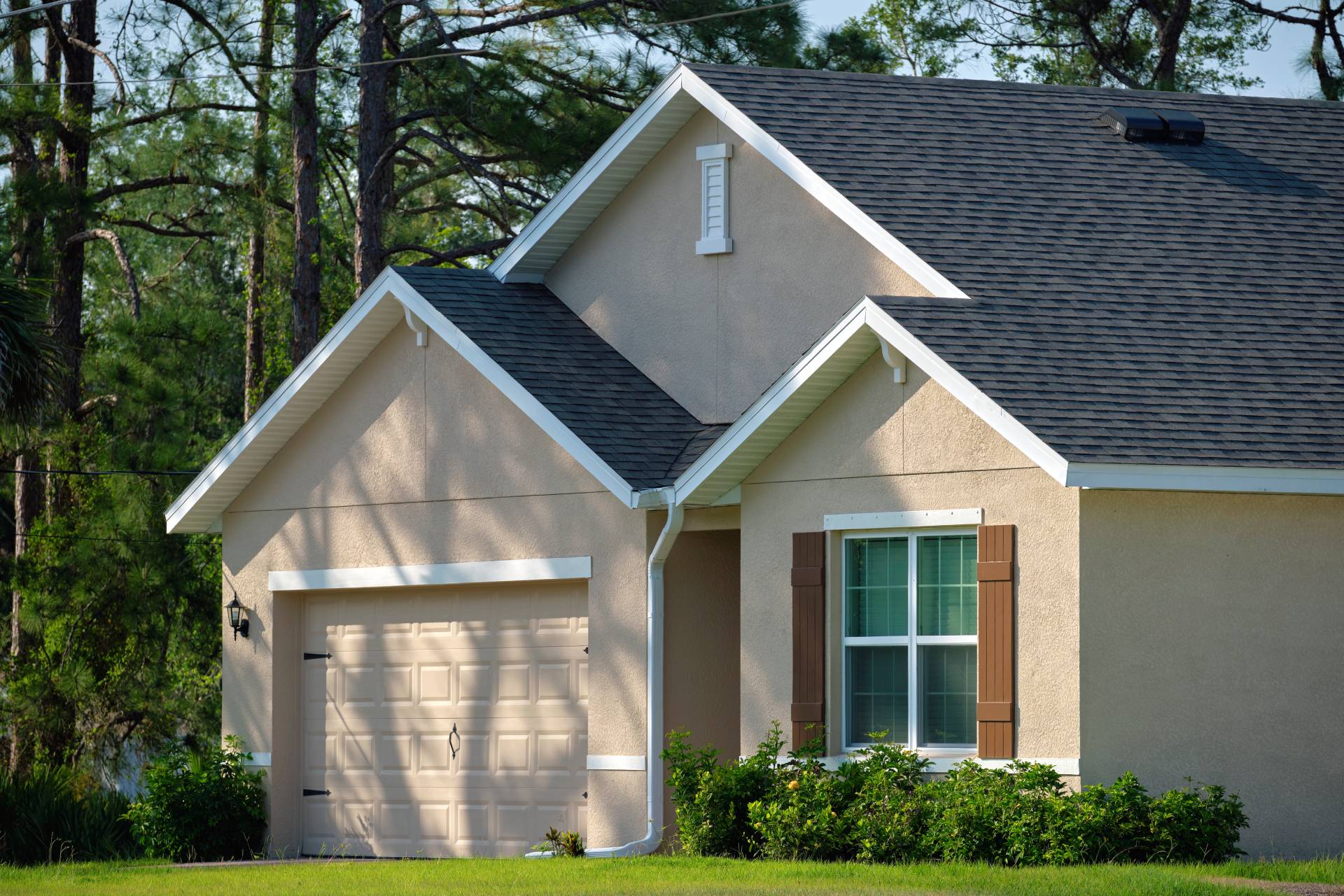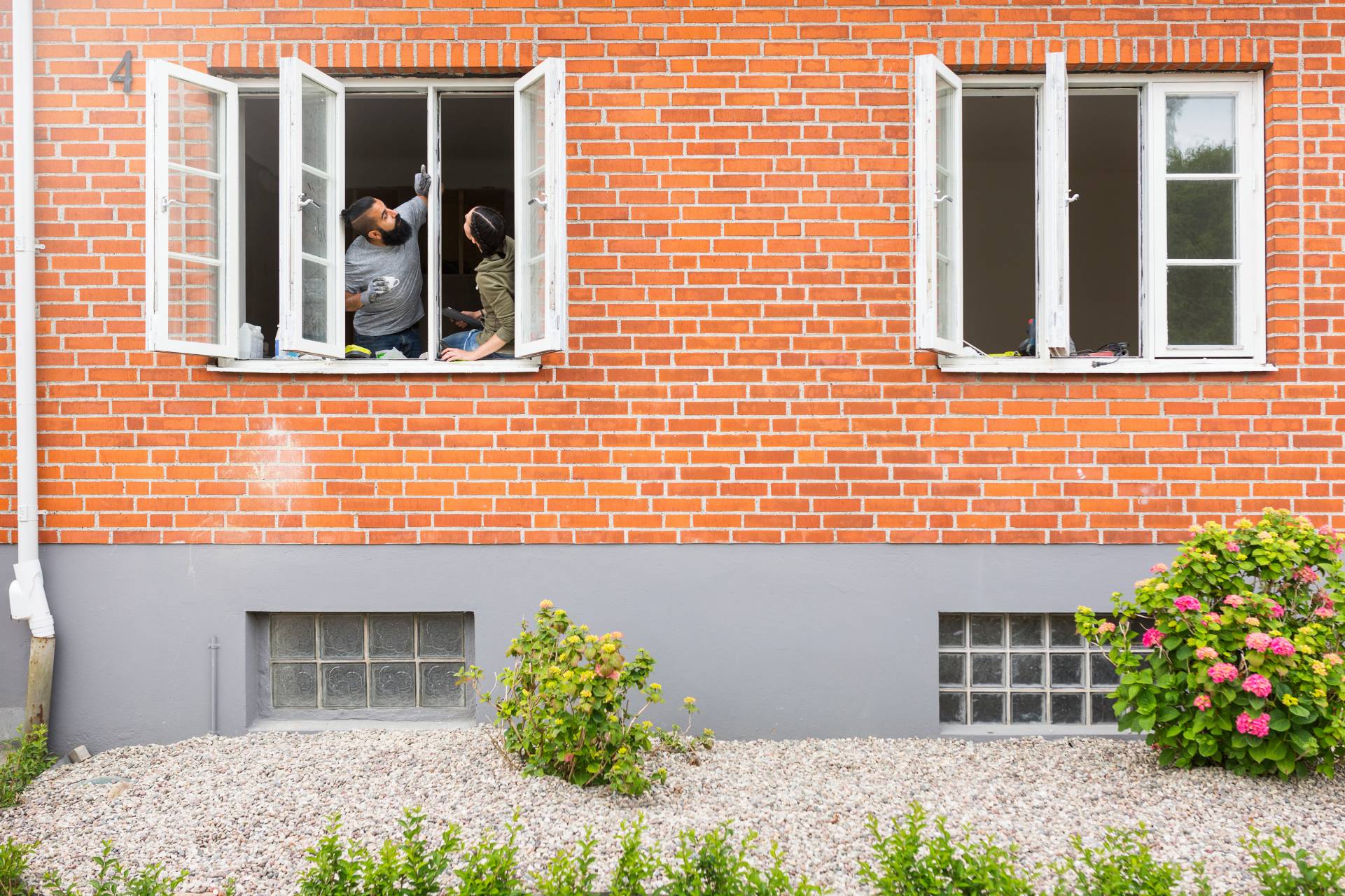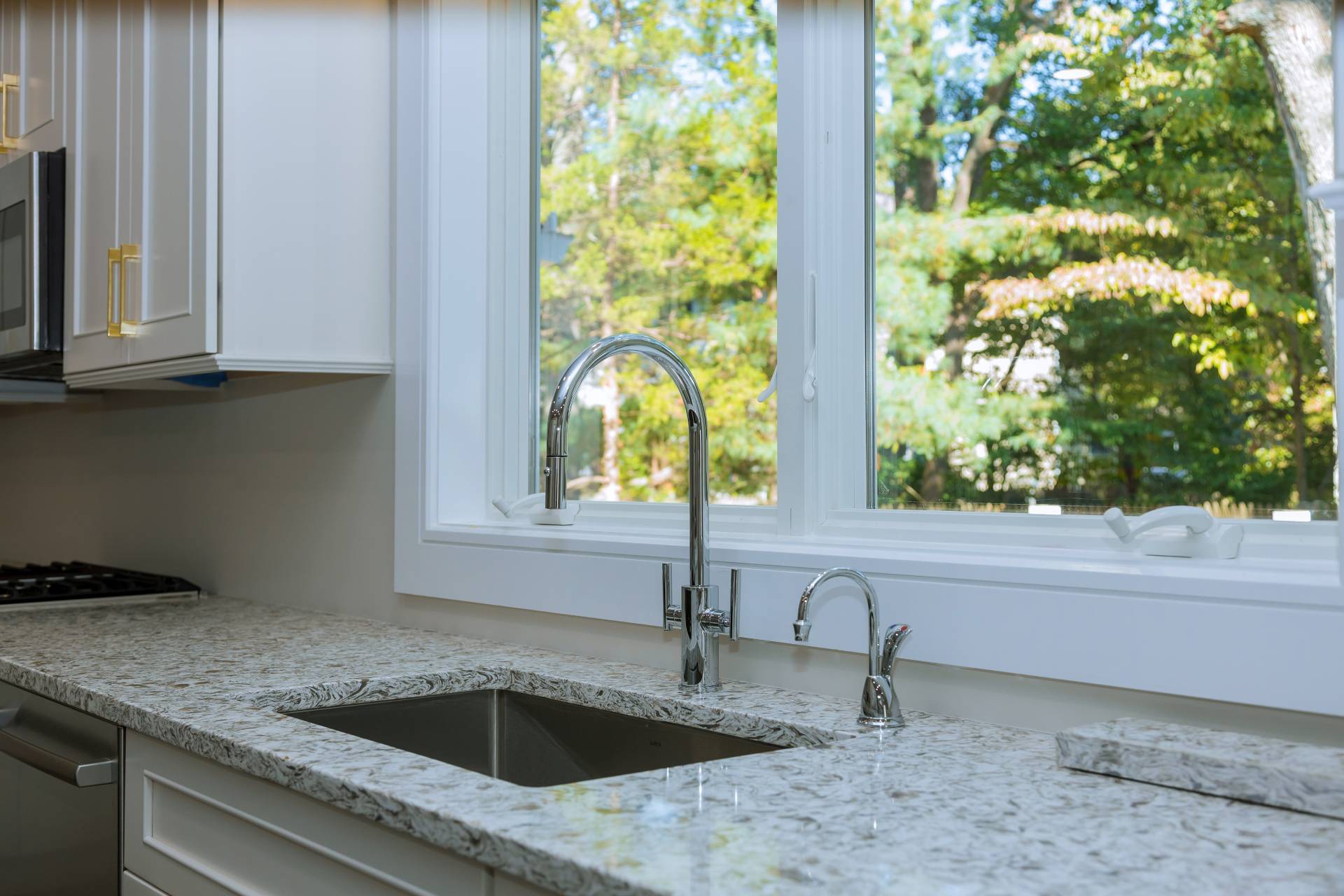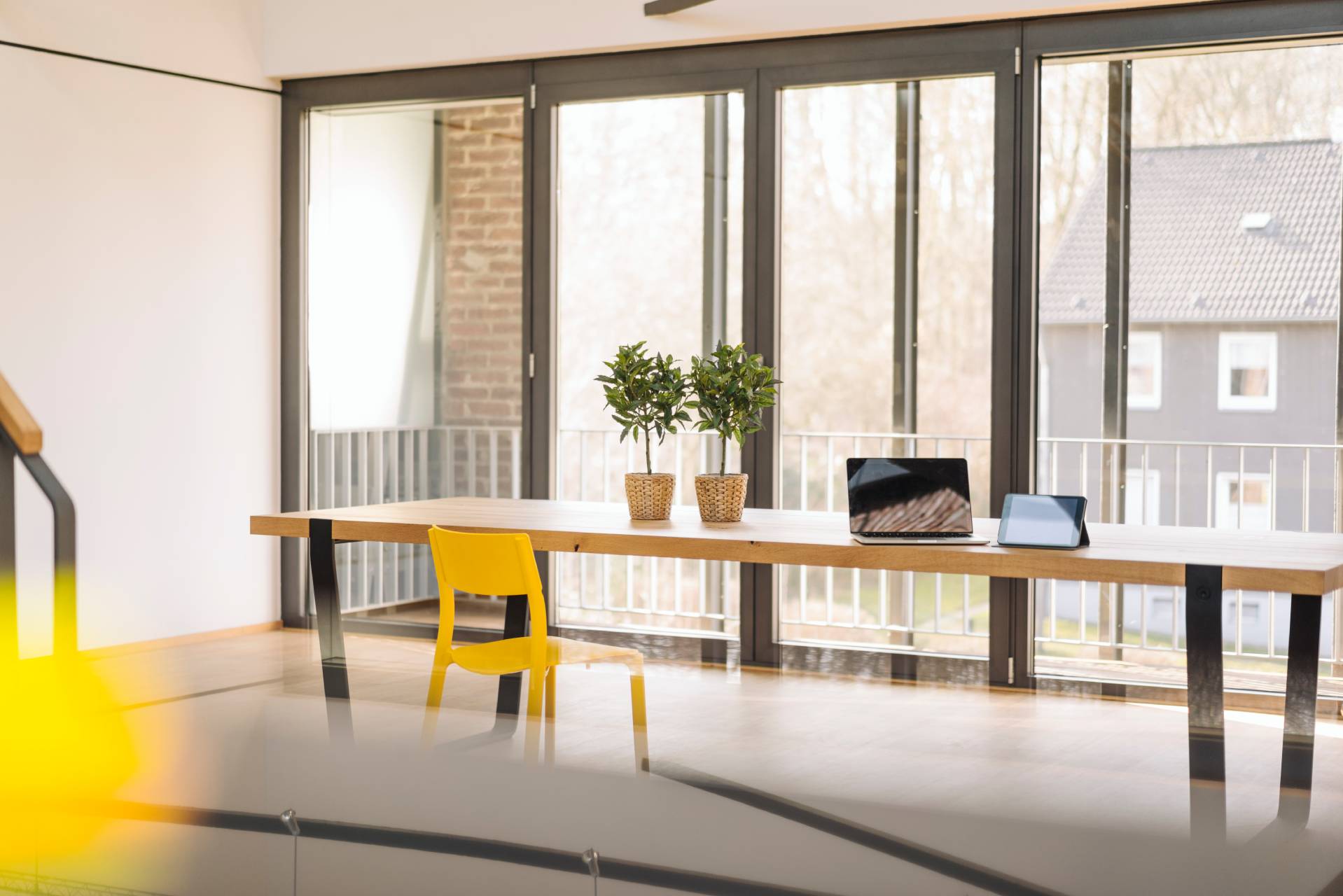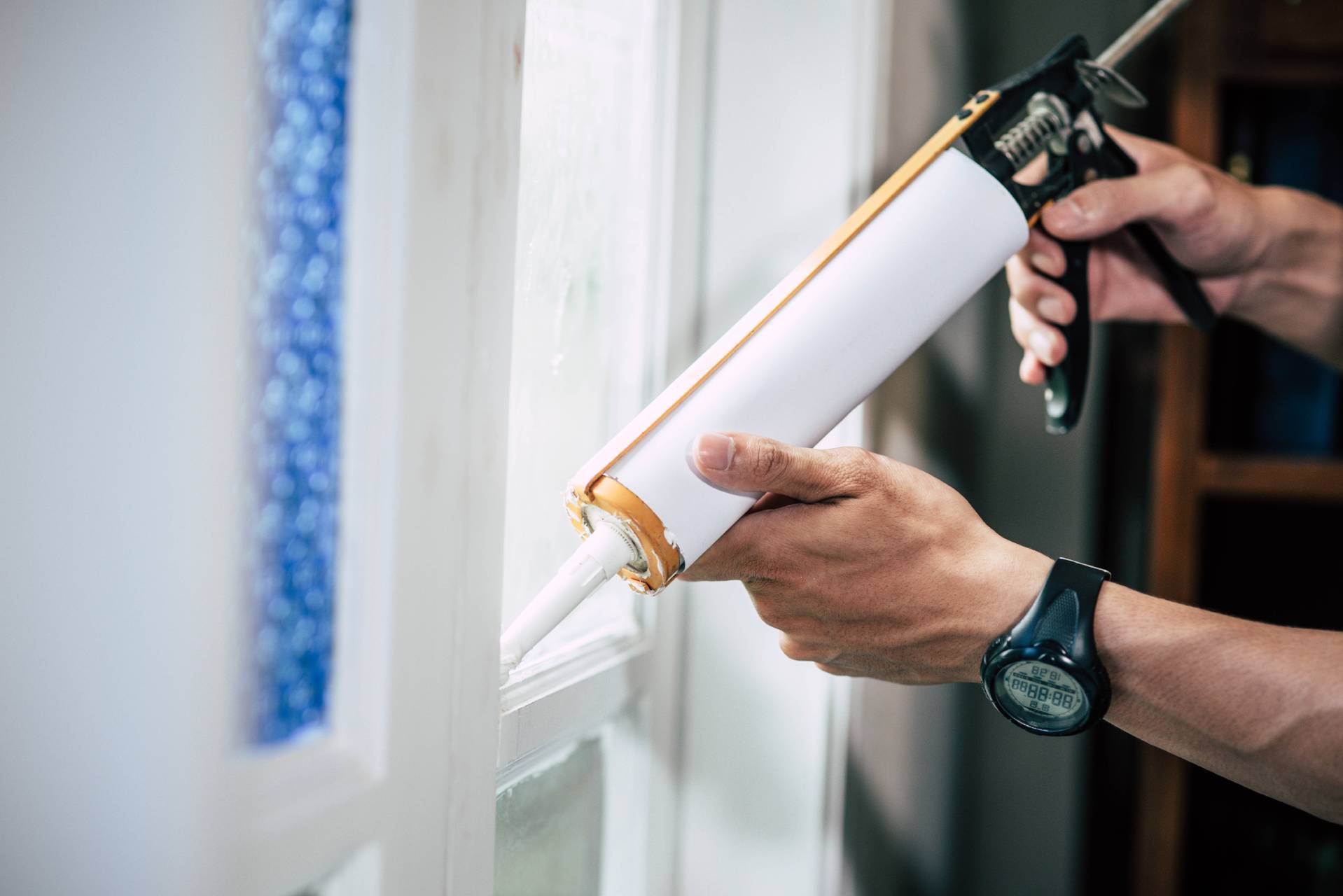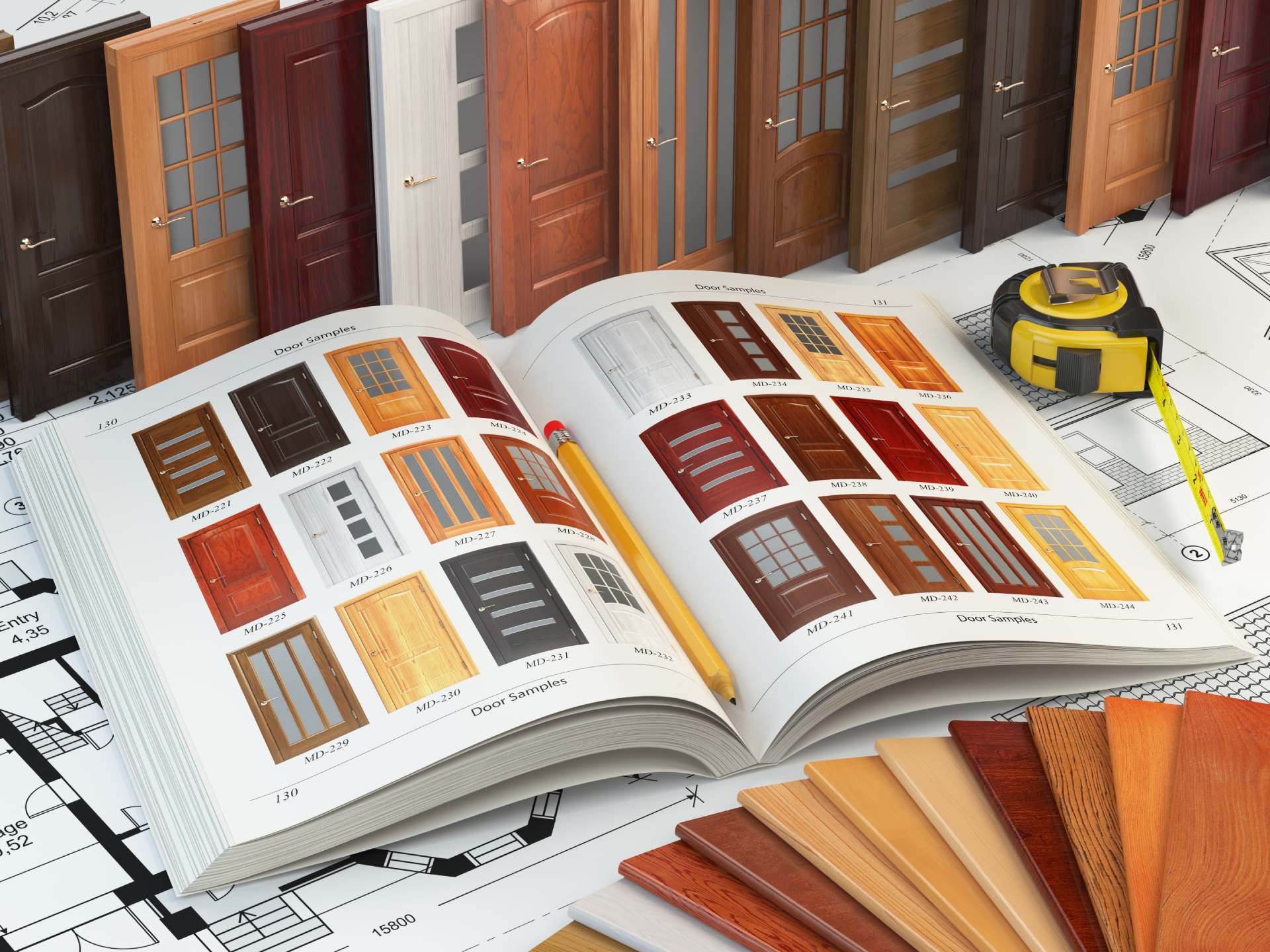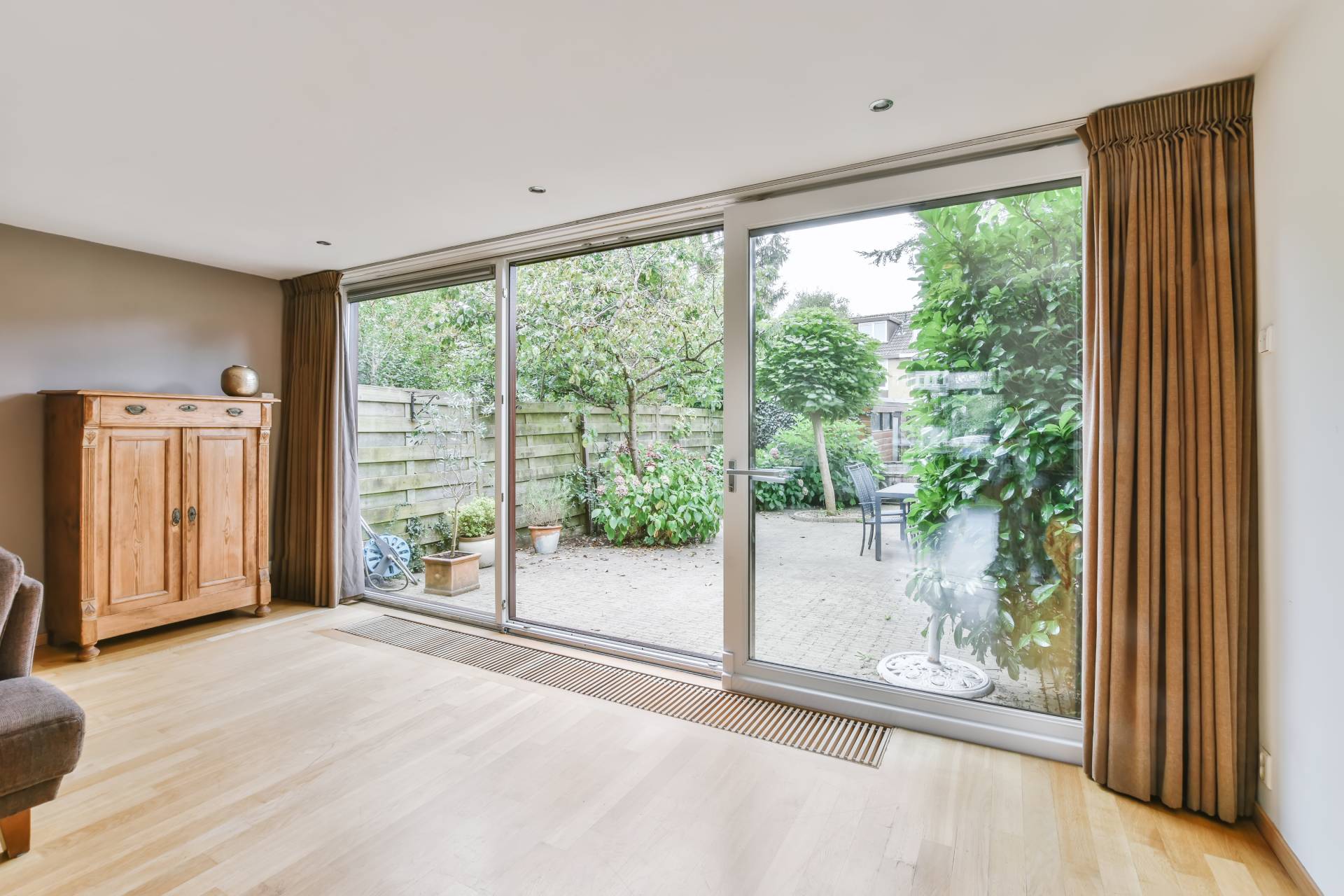Recognizing Visual Signs That Your Garage Door Needs Replacing
Having a functional garage door is crucial for ensuring the safety, security, and convenience of your home. It serves as a primary entry point, protecting your belongings from theft and the elements while also enhancing curb appeal. A reliable garage door can provide peace of mind for you and your family.
Here are some visual signs that you may need to replace your garage door:
Visible Damage Beyond Repair
Garage doors with extensive damage often experience functional issues. When there’s visual damage beyond repair such as large dents, cracks, or severe warping, it indicates that the structural integrity of the garage door has been compromised. Such damage weakens the door’s ability to withstand stress and may lead to failure, posing safety risks to your property and occupants. It can create safety hazards, especially if the door is prone to sudden failure or collapse. A garage door with visible damage may also be easier for intruders to breach, compromising the security of your home and belongings. Whether it’s due to weakened panels, broken locks, or damaged components, a compromised door can make your property more susceptible to burglary or vandalism.
Rust or Corrosion
Extensive rust or corrosion on metal components such as hinges, springs, tracks, or cables can compromise the structural integrity and smooth operation of the door. Over time, this deterioration can lead to the door becoming less sturdy and more susceptible to failure, such as bending, warping, or breaking. This compromises the overall reliability and safety of the door. Rust and corrosion can also interfere with the smooth operation of the garage door. Components such as hinges, springs, tracks, and rollers may become stiff or misaligned, causing the door to operate noisily or unevenly. In severe cases, rusted parts may seize up entirely, preventing the door from opening or closing properly. Weak or damaged metal components can fail unexpectedly, leading to accidents or injuries. Beyond functional concerns, a rusted and corroded door looks neglected and unsightly, diminishing the curb appeal of your property.
Sagging or Misalignment
A garage door that sags or appears misaligned when opening or closing indicates potential issues with the tracks, springs, or cables. Sagging or misaligned garage doors often indicate underlying structural issues. This can occur due to wear and tear over time, damage to the tracks or panels, or issues with the springs and cables. If left unaddressed, these structural problems can worsen over time, leading to further misalignment or even failure of the door. Sagging or misaligned garage doors also typically experience operational issues such as difficulty opening and closing smoothly. The door may stick, jam, or make grinding noises during operation. Misaligned garage doors may not provide proper security for your home. Gaps or uneven seals around the door allow for easy entry by intruders, compromising the safety of your belongings and family. Additionally, a misaligned door may be easier to force open, increasing the risk of burglary or vandalism. Addressing a sagging or misaligned garage door promptly helps maintain the safety, security, functionality, and appearance of your home.
Outdated or Unsafe Design
If your garage door lacks modern safety features or its design is outdated, it may not meet current safety standards. Modern garage doors incorporate safety features such as photoelectric sensors and automatic reverse mechanisms to prevent accidents and injuries. Many older garage doors also lack proper insulation, leading to energy inefficiency and increased heating and cooling costs. Upgrading to a newer, insulated garage door can improve energy efficiency and comfort by minimizing heat loss and outside noise. Older garage doors may experience frequent breakdowns or operational issues due to worn-out components or outdated technology. Upgrading to a newer garage door with modern features and materials ensures reliable performance and reduces the need for costly repairs.
If you notice any of these visual signs, it is important to consult with a professional to assess the extent of the damage and determine whether repair or replacement is the best course of action to maintain the safety, security, functionality, and appearance of your home. Should you replace your garage door, it is important to work with a professional for garage door installation to ensure the job is done safely, correctly, and efficiently. Professionals have the expertise and experience to properly assess your garage’s specifications, recommend the right door for your needs, and install it according to industry standards. Their knowledge helps prevent potential safety hazards, ensures proper functioning of the door, and minimizes the risk of future issues, saving you time, money, and hassle in the long run.
How Weather Stripping Can Improve Your Windows and Doors' Efficiency
Weatherstripping is a material used to seal gaps and cracks around windows and doors. It is typically made of flexible materials, such as rubber, foam, or vinyl, and is installed along the edges of windows and doors. It creates a tight barrier against the elements, maintaining a comfortable indoor environment, protecting against moisture infiltration and moisture damage, and reducing heating and cooling costs. Here’s how weatherstripping can help improve the efficiency of windows and doors at home:
Reducing Air Leaks
Over time, windows and doors can develop gaps and cracks around their frames, allowing air to leak in and out of the house. Air leaks are a significant source of energy loss in buildings, as heated or cooled air can escape through these openings. Many weatherstripping materials are designed to be compressed when the window or door is closed. When installed, they conform to the irregularities of the surfaces they are sealing against, effectively filling gaps and creating a tight seal. By sealing gaps and reducing air leaks, weatherstripping improves the overall energy efficiency of windows and doors. Less air leakage means that your home’s heating and cooling systems don’t have to work as hard to maintain a comfortable indoor temperature, leading to lower energy consumption and reduced utility bills.
Minimizing Drafts
Drafts not only make occupants uncomfortable but also contribute to energy loss by allowing air conditioned air to escape and outside air to infiltrate the building. Many types of weatherstripping are designed to compress when the window or door is closed, creating a snug fit. This reduces the size of any gaps and prevents air from flowing freely through them. By sealing gaps and cracks, weatherstripping blocks the pathways through which drafts would otherwise enter or exit the building. This helps maintain a more stable indoor temperature and prevents cold drafts from chilling occupants during the winter or warm drafts from causing discomfort in the summer, leading to a more enjoyable living space.
Preventing Moisture Infiltration
Moisture infiltration can lead to water damage, mold growth, and structural problems at home. It can also affect the energy efficiency of windows and doors. When water enters through gaps or cracks, it can compromise the effectiveness of insulation and contribute to heat loss or gain, depending on the weather conditions. Many types of weatherstripping are designed to be water-resistant or waterproof, meaning that they can withstand exposure to rain, snow, and other forms of moisture without deteriorating or allowing water to pass through. By effectively sealing gaps and preventing water from entering, weatherstripping helps protect windows, doors, and the surrounding structures from these issues, prolonging their lifespan and reducing the need for repairs and replacements.
Enhancing Insulation
Gaps and cracks around windows and doors can allow heat to transfer between the interior and exterior of the building. During the winter, heated air can escape through these openings, leading to energy loss and increased heating costs. Similarly, during the summer, hot outdoor air can infiltrate the building, forcing the cooling systems to work harder to maintain a comfortable indoor temperature. Weatherstripping creates a barrier against heat transfer, reducing the flow of air between the inside and outside of the building. Enhanced insulation with weatherstripping reduces the workload on heating and cooling systems by minimizing heat transfer through windows and doors. This leads to lower energy consumption, reduced utility bills, and improved overall energy efficiency at home.
Increasing Lifespan
Over time, air infiltration and moisture can cause windows and doors to deteriorate, leading to issues like drafts, leaks, and operational problems. Damage or deterioration, such as rot, corrosion, or warping, on windows and doors can compromise energy efficiency by allowing air leaks and heat transfer. Weatherstripping helps reinforce the structural integrity of windows and doors by sealing gaps and cracks and protecting them from environmental damage. This improves their durability and resistance to wear and tear. By protecting windows and doors from deterioration, weatherstripping helps maintain their efficiency, durability, and energy performance over time.
Overall, weatherstripping plays a crucial role in improving energy efficiency, maintaining indoor comfort and protecting your home from the elements. If you are looking to improve the energy efficiency of your home, consulting with a window professional can help you evaluate the energy performance of your windows, recommend upgrades or weatherproofing techniques, and provide advice on maximizing energy savings.
Exploring the Top Window Styles for Maximizing Natural Illumination in Kitchens
A well-lit kitchen improves visibility, making tasks such as food preparation, cooking, and cleaning easier and safer. Natural sunlight creates a cheerful and uplifting atmosphere in the kitchen, making cooking and meal preparation more enjoyable.
Properly positioned windows and doors can ensure that light reaches key areas of the kitchen, such as the sink, countertops, and cooking surfaces. Placing a kitchen window over a sink is often considered best when maximizing natural light, providing task light, enjoying views and ventilation, and enhancing the aesthetics of the kitchen. This design choice combines functionality, practicality, and visual appeal to create a bright, beautiful, and functional kitchen space.
Here are the top window styles that can help you maximize natural lighting in the kitchen:
Casement Windows
Casement windows typically feature large glass panes that extend from the top to the bottom of the window frame. This expansive glass area allows ample light to enter the kitchen, brightening up the space throughout the day. Casement windows are hinged on one side and open outward with a crank mechanism. This design allows for versatile opening options, including fully opening the window to let in maximum sunlight or partially opening to control ventilation while still allowing natural light to enter. While primarily designed for ventilation, casement windows can also serve as effective sources of natural light. When closed, casement windows provide unobstructed views of the outdoors, allowing natural light to flood into the kitchen without any barriers. This clear view enhances the feeling of openness and connection to the outdoors, maximizing the perception of natural light in the space. Their large glass area and ability to fully open provide an optimal balance of ventilation and illumination in the kitchen.
Bay and Bow Windows
Bay and bow windows are excellent choices for maximizing natural light in the kitchen. Bay windows feature a larger central window flanked by two smaller side windows, with sharper angles and a more angular appearance. On the other hand, bow windows consist of multiple window panels arranged in a gentle curve along the exterior wall, creating a round or elliptical shape with a smoother, more uniform curve. Both bay and bow windows create an expansive glass area that allows plenty of natural light to enter the kitchen. The angled design of bay and bow windows allows natural light to enter the kitchen from multiple angles. This helps distribute sunlight evenly across the room, minimizing shadows and creating a well-lit environment. This configuration maximizes daylight exposure and brightens up the space throughout the day. Bay and bow windows provide panoramic views of the outdoors, allowing homeowners to enjoy the scenery while cooking or dining in the kitchen. The expansive views enhance the feeling of openness and connection to the outdoors, contributing to a bright and inviting atmosphere. In addition, bay and bow windows serve as architectural focal points that add character and visual interest to the kitchen. Their distinctive shapes and designs create a sense of elegance and sophistication, enhancing the overall appeal of the space.
Awning Windows
Awning windows are hinged at the top and open outward from the bottom, forming an awning-like shape when opened. While primarily designed for ventilation, awning windows also allow plenty of natural light to enter the kitchen even when closed. Their large glass area and upward-opening design provide an optimal balance of ventilation and illumination. With a crank mechanism or handle located at the bottom of the window frame, awning windows are easy to operate. This allows for smooth and effortless opening and closing, making it convenient to adjust ventilation and natural light levels in the kitchen. The outward-opening design of awning windows allows for ventilation without compromising privacy, as the window opens from the bottom and remains partially covered by the frame. Awning windows also provide protection from the rain when opened, allowing fresh air to circulate even during inclement weather. Additionally, awning windows have a sleek and modern appearance that complements contemporary kitchen designs. Their clean lines and minimalist aesthetic add a touch of sophistication to the space while maximizing natural light.
Picture Windows
Picture windows are typically large, fixed windows that consist of a single pane of glass. The absence of grids, muntins, or sashes maximizes daylight exposure and enhances the sense of openness and connection to the outdoors. Since picture windows do not open, they can be designed to cover a wide expanse of the exterior wall, capturing sunlight from multiple angles. This expansive glass area creates a panoramic effect that maximizes natural light distribution and brightens up the entire kitchen space. Picture windows come in various shapes and sizes, allowing homeowners to customize the design to suit their preferences and architectural style. Whether it is a large horizontal window above the sink or a floor-to-ceiling window overlooking the backyard, picture windows can be tailored to maximize natural light and enhance the overall aesthetics of the kitchen.
Overall, casement, bay, bow, awning, and picture windows are excellent choices for maximizing natural light in the kitchen. These window styles offer different features and benefits due to their large glass area, versatile opening options, expansive views, and architectural significance. Incorporating these window styles into the kitchen design can create a bright, airy, and inviting space illuminated by abundant natural light. Depending on the specific layout, design preferences, and architectural constraints of the kitchen space, homeowners can choose the window style that best suits their needs and enhances the overall brightness and ambiance of the room.
Understanding Energy Star Ratings for Windows: What You Need to Know
Energy efficient windows and doors can provide numerous benefits. They can help reduce energy bills, improve comfort, and increase environmental sustainability at home. Homeowners can easily identify energy efficient products by checking for the Energy Star label. These apply even to windows.
Here's what you need to know when selecting Energy Star-rated windows for your home:
Energy Efficiency Benefits
Energy Star-rated windows are designed to be more energy efficient than standard windows. These windows often feature advanced insulation technologies, such as multiple panes, low-emissivity (Low-E) coatings, and gas fills. The improved insulation provided by Energy Star-rated windows contribute to consistent indoor temperatures throughout the year. Homes with these windows often experience enhanced comfort in both hot and cold seasons. Using energy efficient windows helps reduce overall energy consumption, contributing to environmental sustainability. Homeowners can play a role in minimizing their carbon footprint by choosing Energy Star-rated products.
U-Factor and Solar Heat Gain Coefficient (SHGC) Values
Homeowners should be familiar with U-Factor and Solar Heat Gain Coefficient (SHGC) values when considering Energy Star-rated windows.
The U-Factor measures how well a window insulates and indicates the rate of heat transfer through the window. A lower U-Factor signifies better insulation. In colder climates, windows with a low U-Factor can help minimize heat loss and enhance energy efficiency. Windows with a higher U-Factor may allow more heat to escape, leading to increased heating costs.
SHGC measures the amount of solar heat that enters a home through the windows. A lower SHGC value indicates better control of solar heat gain. In warmer climates, or for windows receiving a lot of direct sunlight, homeowners may want windows with a lower SHGC to reduce the amount of solar heat entering the home. This helps in maintaining a comfortable indoor temperature and can lead to lower heating costs.
By looking for the Energy Star label, homeowners can easily identify Energy Star-rated windows. This label indicates that the windows meet or exceed the program’s energy efficient guidelines, including U-Factor and SHGC requirements.
Climate Zone Considerations
Energy Star criteria for windows vary based on different climate zones. Energy Star classifies climate zones into four categories: Northern, North-Central, South-Central, and Southern. These zones are based on regional climate conditions, such as temperature ranges and heating and cooling needs. Energy Star sets specific U-Factor and SHGC criteria for windows in each climate zone. The criteria are tailored to address the unique energy efficiency needs of homes in different climates. In colder climates (Northern and North-Central zones), where heating needs are higher, lower U-Factor values are recommended to minimize heat loss while SHGC requirements may be more flexible. In warmer climates (South-Central and Southern zones), U-Factor requirements may be less stringent while lower SHGC values are recommended to control solar heat gain and reduce the demand for air conditioning. Homeowners should consider the balance between U-Factor and SHGC based on their specific climate zones.
Long-Term Savings and Return on Investment
While Energy Star-rated windows may have a higher upfront cost compared to standard windows, homeowners should also consider the long-term savings in energy bills. Energy Star-rated windows contribute to lower heating and cooling costs. The enhanced energy efficiency helps reduce the demand for heating in winter and cooling in summer, leading to ongoing savings on utility bills.
As homeowners benefit from energy cost savings, they can realize a return on their investment over time. The duration from recouping the initial investment depends on factors such as energy prices, climate, and the specific characteristics of the windows. Furthermore, some regions offer incentives, rebates, or tax credits for energy efficient home improvements, including the installation of Energy Star-rated windows. Checking with local utility companies or government programs can help in exploring potential financial benefits.
Energy Star-rated windows are typically designed for durability and longevity. Proper maintenance of Energy Star-rated windows ensures their continued energy efficiency. Regular cleaning, inspection, and repairs, if needed, contribute to the windows’ longevity and overall performance. Choosing high-quality windows can result in a longer lifespan, providing extended opportunities for energy savings over the years.
Energy efficient upgrades can enhance the resale value of a home. Potential homeowners who recognize eco-friendly practices can appreciate the positive environmental impact of using Energy Star-rated products. Potential buyers may also be attracted to the prospect of lower energy bills and a more comfortable living environment, making the property more marketable.
If you are looking for energy efficient windows and doors, look for the Energy Star label on the products. The label indicates that the windows or doors have undergone testing and meet or exceed the energy efficiency standards set by the Energy Star program. When selecting windows and doors for your home, it is advisable to consult with a professional who can provide guidance on selecting windows that suit your home’s local climate and your energy efficiency goals.
Sealing the Way to Energy Efficiency: How to Identify and Fix Home Drafts
Sealing plays a crucial role in improving energy efficiency at home by reducing air infiltration and preventing drafts. When your home is well-sealed, your heating and cooling systems do not have to work as hard to compensate for the loss of conditioned air. However, air leaks and drafts can occur when there are gaps, cracks, or openings in a structure’s envelope that allow outdoor air to enter or conditioned indoor air to escape. You might feel drafts as cool air entering a room during the winter or warm air escaping during the summer. Air leaks and drafts can have several negative consequences, including reduced energy efficiency, increased energy costs, and decreased comfort within the living space.
Air leaks and drafts can occur in various areas throughout your home. Common sources include windows and doors, walls, attic access points, basements, electrical outlets, and ventilation openings. Fixing drafts at home involves identifying the sources of air leaks and implementing measures to seal or insulate those areas. Here are some ways to identify and fix drafts in your home:
Identifying Drafts
Regularly checking for drafts, especially during extreme weather conditions, can help you identify and address sealing issues promptly.
1. Visual Inspection
To identify drafts at home, you can start by conducting a visual inspection. Look for visible gaps around windows, doors, and baseboards. Check for cracks in the walls, ceilings, and floors. Inspect areas where different building materials meet, such as corners and joints.
2. Candle or Incense Test
Another way to identify drafts is through a candle or incense test. On a windy day, place a lit candle or incense stick around windows, doors, and other potential draft sources. Watch for the flame or smoke movement, which can indicate air movement caused by drafts.
3. Feel for Drafts
On a cold day, you can use your hand to feel for drafts around windows, doors, and electrical outlets. Move your hand along the edges of doors and windows to detect any cold air coming in, which may indicate a draft.
4. Check the Attic or Basement
Inspect the attic and basement for any gaps, especially around plumbing and electrical penetrations. Also check for gaps in the attic floor or basement ceiling.
Fixing Drafts
Once you have identified the sources of the drafts, you can incorporate a few solutions to improve sealing in your home.
1. Weather Stripping
Weather stripping is specifically designed to seal gaps around movable parts like doors and windows. It creates a flexible barrier that prevents air infiltration, keeps out moisture, and helps maintain a comfortable indoor environment. If there are drafts in your home from windows and doors, you can install weather stripping to create a tight seal whenever your windows and doors are closed. Weather stripping is commonly applied around the edges of windows and doors or along the meeting rail of double-hung windows. Choose the appropriate type of weather stripping based on the specific area.
2. Door Sweeps
Door sweeps are devices used to seal the gap between the bottom of the door and the threshold. They are designed to prevent drafts, dust, insects, and moisture from entering the building through the gap under a door. Door sweeps are typically made from materials that provide a flexible and durable barrier, such as rubber or vinyl. You can install door sweeps at the bottom of exterior doors to seal gaps. Door sweeps can help you ensure a tight seal without affecting the door’s ability to open and close, contributing to energy efficiency within your home.
3. Caulking
Caulking is a versatile material used to seal gaps and cracks in various surfaces, providing a durable and waterproof seal. It is used to prevent air and water infiltration and to enhance energy efficiency. Caulk comes in various formulations. To fix drafts, choose a calk that is appropriate for the material and the location. Caulk is applied to stationary parts of doors and windows, as well as gaps and joints in walls, siding, and other surfaces. It can be used to address gaps between window frames and walls, cracks in walls and siding, gaps around plumbing and electrical penetrations, and joints between different building materials.
4. Window Film
Drafts around windows are often a significant source of heat loss in homes, especially if the windows are older or single-pane. Applying window films can provide an extra layer of insulation. It can help seal gaps and cracks around windows, reducing drafts. It can help create a more airtight seal, preventing cold air from entering and warm air from escaping. Window films can minimize drafts and reduce heat transfer through windows, improving energy efficiency and comfort at home. Applying window film can be a cost-effective way to improve the energy efficiency of existing windows. While window films can be valuable in addressing drafts, they may not be a substitute for addressing more significant structural issues with windows or doors. For more comprehensive solutions, you can also consider combining window films with weather stripping, caulking, or upgrading to more energy-efficient windows.
Sealing gaps and improving the overall airtightness of your home can help you enhance energy efficiency, reduce energy consumption, and create a more comfortable indoor environment. Regular maintenance and periodic checks can help you stay ahead of drafts and ensure your home remains energy efficient.
The Latest in Bedroom Window Styles for 2024
Creating a visually appealing and comfortable environment is important for bedrooms. A well-designed and aesthetically pleasing bedroom promotes a sense of comfort and relaxation. Thoughtfully chosen colors, textures, furnishings, and fixtures can create a cozy and inviting atmosphere that encourages rest and rejuvenation. Windows and doors play a crucial role in the overall functionality, comfort, and aesthetic of a bedroom. The choice of door and window style, material, and finish can enhance the room’s design and complement its interior décor.
For 2024, here are window styles that can enhance the aesthetics and functionality of your bedroom:
Large Windows
This coming year, connection to nature is an important aspect of bedroom style. Sustainable and environmentally friendly themes and practices have become part of many lifestyles. Fashionable bedroom décor includes houseplants, earthy tones, and sustainable materials.
Large windows provide fantastic views of the surrounding environment, such as a garden or natural landscape. With large windows, the boundaries between indoor and outdoor spaces become less distinct. Large windows can enhance the overall visual appeal of the bedroom and create a sense of connection to the outdoors. This connection to nature can create a calming and peaceful atmosphere, promoting relaxation and stress reduction.
Bedrooms with large windows are awesome. Large windows allow a significant amount of natural light to enter the room, creating a bright and airy atmosphere. Exposure to natural light is known to have positive effects on mood, energy levels, and overall wellbeing. The abundance of natural light and the connection to the outdoors can create an illusion of a large and more open space. This can be particularly beneficial in smaller bedrooms, making them feel more spacious. Large windows can also facilitate better ventilation by allowing more fresh air to circulate through the room. This can maintain a comfortable indoor environment and prevent the room from feeling stuffy.
Large windows can be a focal point of the bedroom’s design, adding a sense of grandeur and sophistication. They can also be a key element in the overall architecture of the room.
Bay Windows
The need for storage space is one that never goes away. This coming year, bay windows with built-in seats and storage are a stylish way to blend functionality and aesthetics. Bay windows are a type of window design that projects outward from the main wall of the room, creating a bay or alcove in the interior. Bay windows add architectural interest to a room, creating a visually appealing focal point. The combination of a bay window, seat, and storage can add charm and character to the bedroom, enhancing its overall aesthetics.
Bay windows typically have multiple panels of glass, allowing ample natural light to flood the space. This can make the bedroom feel brighter, airier, and more inviting. A bay window with a seat and storage is a multi-functional design element. It serves not only as a source of natural light and a seating area but also as a practical storage solution. The seat in the bay window creates a perfect spot for a perfect reading nook. Placing a cushion or pillows on the seat can make it a comfortable space to enjoy the sunlight and to relax. The area beneath the bay window seat can be utilized for storage. This additional storage space is valuable for keeping the bedroom organized and clutter-free. The versatility of a bay window with seating and storage maximizes the use of available space.
The design of bay windows often includes a wide and unobstructed view of the surroundings. This can be advantageous if the bedroom is in a location with scenic views, such as a garden, cityscape, or natural landscape. The expansive view can foster a connection with nature, which is a key aspect in bedroom styles for 2024.
Casement Windows
For 2024, minimalist designs and classic modern styles are in vogue. The clean lines and modern design of casement windows can contribute to the overall architectural aesthetics of a bedroom. They can complement various styles and add a touch of elegance to the room.
Casement windows typically have large glass panes that allow ample natural light to enter the room. They are hinged on one side and open outward like a door. This design allows for maximum ventilation, as the entire window can be opened to let in fresh air. The unobstructed view and the ability to fully open the window can contribute to a comfortable and healthy environment. Casement windows provide unobstructed views because there is not vertical middle bar on the window. This enhances the bedroom’s connection to the outdoors, as it allows for a clear and expansive view.
Casement windows come in various sizes and shapes, offering versatility in design. Homeowners can choose from a range of styles and customize the windows to match the aesthetic of the bedroom. Recently, custom or handmade design elements have gained momentum, and they are expected to stay in style for 2024. The casement window’s flexibility in design allows for creative and personalized window configurations.
When choosing windows for a bedroom, it is important to consider factors such as the size of the room, the desired level of natural light and ventilation, and the overall aesthetic preferences. Working with professionals can help ensure that the chosen windows meet your functional and design requirements.
5 Essential Considerations Before Upgrading Your Windows & Doors
Windows and doors play a crucial role in safeguarding our homes, ensuring our security, and even boosting our home's overall appeal. But, like everything else, they age and wear out. That's when the idea of upgrading your windows and doors becomes a top priority. We're here to guide you through five key considerations before you embark on this exciting home improvement journey.
1. Do I Need an Upgrade?
Before you leap into upgrading your windows and doors, let's take a moment to think about your unique needs. This isn't about blindly following trends; it's about ensuring your investment aligns with what you truly need.
One significant consideration is energy efficiency. Those old windows and doors might be quietly siphoning away your hard-earned cash through sneaky drafts. Upgrading can lead to substantial savings on your energy bills down the road. Imagine a cozier home and a fatter wallet – that's the dream!
Of course, your safety and the safety of your loved ones are paramount. Outdated windows and doors might not provide the same level of security that modern options do. Upgrading can offer peace of mind, knowing your home is better protected against unwanted guests.
Finally, the looks of your house are as important as the other needs you have to consider. Aside from your personal satisfaction, a good-looking house can have a substantial impact on your home's resale value. New windows and doors can work wonders for your house's curb appeal, making it more inviting to guests and potential buyers.
To make your decision-making process smoother, try jotting down what you hope to achieve with this upgrade. Are you mainly focused on slashing those energy bills, beefing up security, or giving your home a fresh new look? Knowing your objectives will be your trusty guide throughout this journey.
2. Can I Afford to Upgrade My Windows and Doors?
Now, let's dive into the financial aspect of this home improvement journey – a topic that's crucial for any project. Upgrading your windows and doors is indeed an investment that can boost your home's value, but it's vital to have your finances in order.
Getting yourself a clear budget is necessary if you want this to be a successful project. It'll prevent you from overspending and ensure you have enough funds to continue the project until its completion. So, take time to look at your financial position and see whether an upgrade is something you can afford at the moment.
It's also good to remember that the overall cost of the project can vary due to different factors. A good example of this is the materials that will be used for the upgrade. Aside from the upfront cost of different materials, their unique features might call for specific installation techniques that will take more time and money. It's really best to gather as many quotes as you can before proceeding. Having a financial strategy will ensure that you get the upgrade you deserve.
3. What Materials To Use?
Not that you have the budget, the next step is choosing the right materials. Materials for windows and doors include wood, vinyl, and aluminum. Each material comes with its own distinct set of benefits and drawbacks, so it's of utmost importance to choose the one that best suits your particular requirements.
Wooden windows and doors offer classic beauty, but they demand regular upkeep to prevent rot and decay. Vinyl, on the other hand, is virtually maintenance-free and excels in energy efficiency. Aluminum is durable and modern but might not provide the same insulation as other materials.
Your local climate plays a significant role in your material selection. In harsh weather conditions, more robust materials like fibreglass might be a better fit. Also, consider your personal preferences. Do you lean toward the timeless appeal of wood or the modern simplicity of aluminum? Finding the right balance between aesthetics and functionality is key.
4. Can I Maintain My New Windows and Doors?
Maintaining your new windows and doors is an often overlooked aspect of ownership. Different materials have distinct maintenance needs, so let's shed some light on this topic.
Wood: Wooden windows and doors require periodic painting or staining to shield them from the elements. Neglecting this can lead to rot and decay. If you're ready to commit to this upkeep, wood can be a beautiful choice.
Vinyl: Vinyl is incredibly low-maintenance. It mainly needs occasional cleaning with soap and water to keep it looking pristine. For busy homeowners, vinyl offers the benefit of time-saving maintenance.
Aluminum: Aluminum is durable and generally resistant to rust and corrosion. Regular cleaning is typically all that's needed to maintain its appearance.
Proper maintenance not only keeps your windows and doors looking good but also extends their lifespan. Consider your lifestyle and how much time you can realistically dedicate to maintenance when choosing your materials.
5. Who Should I Ask For Help?
Finally, let's emphasize the importance of professionals in this upgrade process.
Installing windows and doors is more than just swapping out old for new. It involves precise measurements, structural considerations, and ensuring a snug fit to prevent drafts. Improper installation can lead to problems down the line, such as leaks and decreased energy efficiency.
So, the wisest decision you can make is to get a professional contractor to do the job. Their expertise and hands-on experience will ensure that the job is completed correctly from the get-go. While DIY projects can be fulfilling, when it comes to windows and doors, which are an investment in your home's comfort and value, professionals truly excel in delivering top-notch results.
The Risks of Not Taking These Into Consideration
We understand that the prospect of an upgrade can be quite thrilling, but neglecting the considerations we've outlined can have more downsides than upsides. For instance, not having a suitable budget may tempt you to cut corners, leading to an incomplete and unsatisfactory project. Likewise, attempting a full DIY approach without the necessary tools and expertise might result in windows and doors that don't harmonize with your home's aesthetics. Moreover, a poorly executed project can create security vulnerabilities, putting your loved ones at risk. Rushing into it could potentially leave you in a worse position than before you even initiated the upgrade.
Conclusion
Upgrading your windows and doors is a significant decision that can enhance your home's aesthetics, energy efficiency, and security. By considering your specific needs, budget, materials, maintenance, and the importance of professional help, you can embark on this home improvement journey with confidence. Take your time, make informed decisions, and watch as your home transforms into a more comfortable and beautiful space.
Outdoor Spaces: Enhancing Your Patio with Sliding Doors and Large Windows
Outdoor patios provide accessible spaces to connect with nature. From the comfort of your own home, you can experience the changing seasons, enjoy fresh air, and soak in natural sunlight. With outdoor patios, you can relax or unwind or host social gatherings. Whether you have a garden or landscaping or have added accents and décor, your outdoor patio serves as a visually appealing focal point that contributes to your home’s overall curb appeal. A well-designed outdoor patio can harmoniously blend with the architectural style of your home. It serves as an extension of your home’s living space, adding functional value as well.
Windows and doors connect your home’s interior and exterior areas. If your home has an outdoor patio, sliding doors and large windows can improve your experience and enhance your home’s aesthetic. Here are some ways they do:
Indoor-Outdoor Flow
Providing unobstructed views of the outdoors, sliding doors and large windows can blur the boundaries between your indoor living space and the patio. When open, the sliding doors remove physical barriers between your indoor space and your outdoor patio. This creates a more fluid flow between the two spaces. With sliding doors, it is easy to move between your home’s indoor and outdoor areas, making your patio feel like an extension of your home. Enhancing the indoor-outdoor flow of your home can encourage you to incorporate outdoor living into your daily routines, such as using the patio for morning coffee, afternoon work, or evening relaxation. The seamless integration and flow between these spaces can help you feel less cooped up at home and more connected to the outdoors, positively impacting your overall wellbeing.
Expansive Views
Large windows and sliding doors often feature wide floor-to-ceiling glass panels and minimal frames, which minimize the visual barriers between the indoors and outdoors and offer expansive views of your outdoor patio and its surroundings. Large windows and doors can provide panoramic sightlines that capture the entirety of your patio area, enhancing the sense of openness and connection to the outdoor environment. When strategically placed, large windows and sliding doors can frame specific aspects of your patio, garden, or landscape, creating a visually pleasing focal point that draws the eye. Fully opening sliding doors can create a visual extension from your indoor space to your patio, making your patio feel like an integrated part of your living area.
Abundant Natural Light
With wide glass panels of large windows and sliding doors, more sunlight can enter your home from various angles throughout the day. This means that you will not need to rely on artificial lighting to create a bright and comfortable environment in your living spaces. Natural light creates a comfortable ambiance and helps make your living spaces feel comfortable and welcoming. As the sun changes positions throughout the day, you can enjoy the dynamic aesthetic created by the play of light and shadows at different times of the day. Sliding doors and large windows can significantly increase the overall brightness and visual appeal of your home and reinforce your connection to the outdoor environment.
Seamless Entertaining
Sliding doors can create a harmonious environment for social gatherings. By keeping sliding doors open, you can allow guests to easily move between your home’s indoor and outdoor spaces. Making your outdoor patio accessible allows for an expanded gathering space and avoids overcrowding in your indoor spaces. Furthermore, with the option to open or close sliding doors, you can have the flexibility in arranging dining and entertainment areas. You can opt to serve food indoors and then dine outdoors. You can also adjust the layout to suit different stages of your event or gathering, such as an outdoor cocktail hour followed by an indoor dinner. Having the option to move between indoor and outdoor spaces can make hosting more enjoyable and efficient. It can also keep guests connected and engaged, whether they are indoors or outdoors. In some cases, such as changing weather conditions, easy access to the indoor spaces can ensure your guests’ comfort and overall enjoyment.
Aesthetic Integration
From both the exterior and the interior, the design of large windows and sliding doors can complement the architectural design of your home. The glass surfaces of the windows and doors can reflect outdoor elements, such as the landscaping, and create an illusion of expanded space as you look at your home from your outdoor patio. The use of large windows and sliding doors can encourage you to treat your patio as an extension of your indoor living space and inspire you to decorate it with furnishings and accessories that match your indoor décor. Large windows and sliding doors act as frames that showcase the outdoor environment. They let you appreciate the design of your patio and turn the view of your patio and its surroundings into a captivating design feature of your home.
When incorporating large windows and sliding doors as design elements for your outdoor patio, be sure to consider the orientation of your home, the location of key views, the placement of furniture, and the landscaping and layout of your patio space. With these in mind, you can design a beautiful and functional patio that complements your home’s overall aesthetic.

